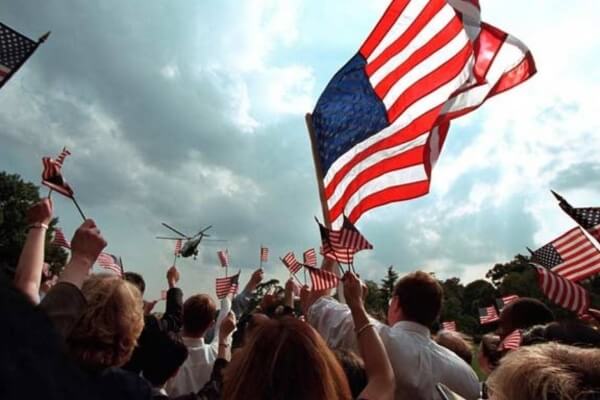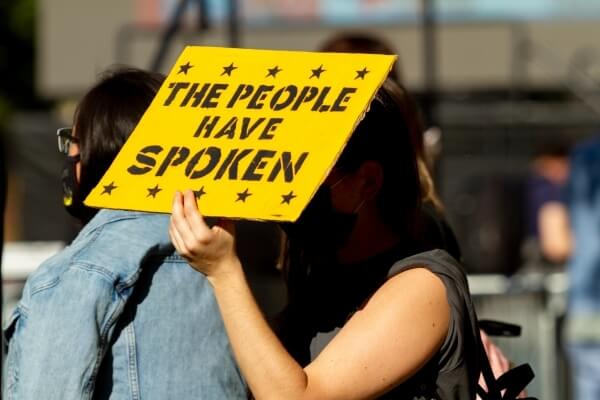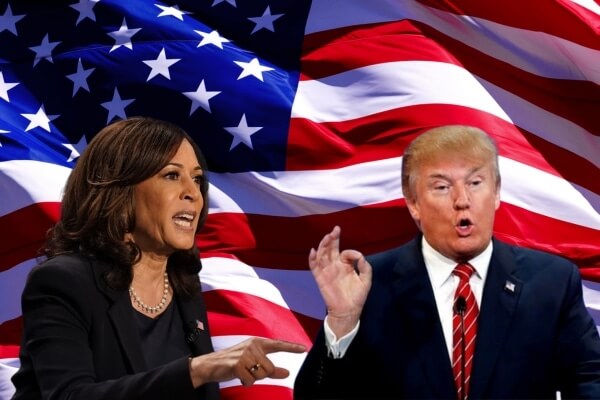The United States is approaching the November 2024 Presidential election during a period of sharp division. Vice President Kamala Harris and President Donald Trump lead groups that are highly polarised, and greatly at odds.
This has led many to speculate on various potential outcomes, ranging from a peaceful transition of power to other scenarios like civil unrest or civil war. This analysis will assess the likely scenarios and assign percentages to their likelihood.
1. Peaceful transition of power (30% likelihood)
Despite the intense political polarisation in the US, a likely outcome remains a peaceful transition. Historically, the United States has demonstrated the ability to uphold democratic institutions. A peaceful transition has been a cornerstone of American democracy, and has persisted through contentious elections, such as those in 1800 and 2000.
The transition remained in 1860, although it was followed by a Civil War shortly thereafter. The 2024 election will be divisive, but the resilience of US institutions—coupled with the (weakened) checks and balances in the judiciary—makes a peaceful transition a likely scenario. Many citizens will likely turn to legal avenues and protests, rather than violence.
The probability of a peaceful transition will be enhanced if the election result is clear, or quick legal avenues are made available.

2. Isolated incidents of violence and protests (45% likelihood)
Given that the political impartiality of US courts is now in question, a much greater possibility is that the election will be followed by instances of violence, particularly in states overwhelmingly controlled by one party. The US has seen a rise in political violence in recent years, with events such as the January 6, 2021, riots, which could well continue depending on the outcome.
There are various factors contributing to this scenario. The proliferation of extremist groups on the right and left, and increased militia activity, create the potential for clashes. These groups are armed, and places where protests have previously erupted—like Portland, Washington, D.C., and Minneapolis—could again become hotspots.
However, such incidents are likely to remain isolated and sporadic, rather than evolving into widespread violence. Also, law enforcement agencies, including federal authorities, have become more proactive in identifying and neutralizing potential threats.

3. Militia activity and civil unrest (15% likelihood)
Militia activity and civil unrest have been on the rise, fueled by increasing polarization, and distrust in government institutions. Militias on the far right have shown signs of preparing for a breakdown in government authority. Some have even positioned themselves as protectors of certain constitutional ideals, including the Second Amendment, which could lead to armed confrontations in the event of a contested election result. The left is not far behind, with two attempts on President Trump’s life in just the last two months.
Scenarios where militias take matters into their own hands are more likely to cause issues in rural areas where local law enforcement may be less equipped to deal with armed groups. However, widespread civil unrest would still be limited by federal law enforcement and National Guard interventions, which are battle-hardened through recent protests.
The prospect of organised militia groups challenging the authority of the federal government is troubling, and the likelihood of this escalating to sustained, widespread violence is not infinitesimal. Most militias lack the coordination, resources, or popular support to wage a large-scale insurgency. Nonetheless, their activity could contribute to a period of heightened instability and unrest, particularly in the weeks or months following the election.

4. Civil war (10% likelihood)
Although the notion of a second American civil war has been increasingly discussed in public discourse, the actual likelihood of such a conflict is low. A civil war, by definition, requires large-scale, organized violence with clear factions fighting for control of the government or territory. While the US is politically polarized, it is not yet divided into armed factions that could sustain such a war.
For a civil war to occur, there would need to be a complete breakdown in the institutions of government, and the failure of law enforcement and military structures to maintain order. However, the economic interdependence of different regions makes a civil war less probable. That said, civil wars have occurred in countries where social divisions were even less pronounced than they are in the US today. The mere fact that the possibility of a Civil War is low today does not mean that it will remain low in 2028.
What is certain is that the 2024 US Presidential election will be one of the most contentious ever. With transparent planning, the probability of a peaceful transition can be enhanced.
READ ALSO: Perceptions of the South Asian Diaspora on Trump and the US Elections





